Mangosteen
History of Mangosteen Fruit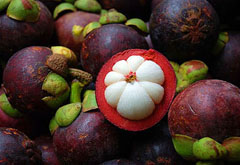
The Mangosteen is believed to have originated in Southeast Asia. Its botanical name is Garcinia mangostana and is grown in tropical areas of both the western and eastern hemispheres. Commercial plantations can be found in the Philippines, India, Malaysia and Thailand. A few other countries in South and Central America as well as Asia are known to be smaller producers of this fruit. It is highly valued because of the excellent flavour it gives. It is referred to as ‘the queen of fruits’ in Asia and in the French Caribbean as ‘the food of the Gods’.
[ad] Empty ad slot (#1)!
Characteristics of Mangosteen
From the time that a Mangosteen seed is planted, it can take anywhere from seven to ten years to give fruit. While it is considered one of the slowest growing tropical fruit trees, it can actually reach a surprising seventy five feet in height.
The rind, also known as the exocarp, of the fruit is a deep, purplish red colour when it is ripe. The edible flesh is tangy and sweet. It is about the same size as a tangerine, and its rind is similar to the pomegranate in texture.
Mangosteen Nutritional Value and Benefits
The Mangosteen fruit is as functional as it is delicious. It is particularly rich in xanthones, which are known to help your body function healthily. In addition to this, each serving of this fruit can contain up to five grams of fibre.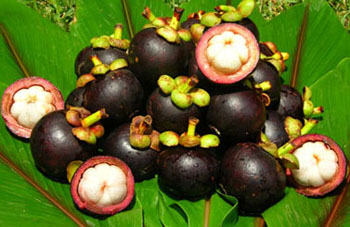
Xanthones are the name given to a group of polyphenolic compounds, which are similar in structure to bioflavanoids and are biologically active. They are very rarely found occurring in nature, and the majority of them are found in just two different families of plants. So far, there have been two hundred xanthones that occur naturally which have been identified, and of those two hundred, forty were discovered in the Mangosteen fruit.
Xanthones, along with their derivatives, have been scientifically proven to have many benefits. Some of these are anti-inflammatory properties, anti convulsion abilities and anti-allergic properties. Other components that are found in Mangosteen also have some medicinal qualities, and examples of a few of these components would be catechins, sterols, polysaccharides and proanthocyanidins. While these compounds are not as nutritionally important or as biologically active as xanthones, they still go a long way in providing the Mangosteen with the medicinal benefits that it is treasured for, because many of these components are antioxidants.
How Mangosteen Fruit is Eaten
How to eat Mangosteen fruit? The bittersweet rind of the Mangosteen is not edible. To get past this, you can use the palms of your hands to crush the rind, which is quite brittle, and reach the white fleshy fruit inside. You can also try twisting the Mangosteen rind firmly until it gives way.
Once the rind is taken away, you can see that the inside of Mangosteen fruit consists of wedged segments. The largest wedge is most likely to contain a seed, while the smaller ones lack one. There can be between four to eight segments, and you can find out how many segments are inside the fruit before even opening it because the number or wedges showing on the protrusions on the underside of the Mangosteen represent the number of wedges inside it. Mangosteen is very sweet and should be consumed as soon as it is opened. Mangosteen juice is also very popular, and perhaps the most well known Mangosteen drink is XanGo, marketed by a company based in Utah and introduced to American consumers in 2002.
Other uses of Mangosteen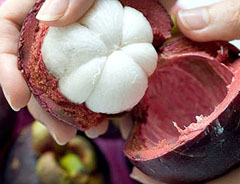
The medicinal properties of Mangosteen fruit mean that people use it as a home remedy or herbal remedy in curing several ailments. In many Asian countries, such as China, Thailand and India, preparations are made from the Mangosteen rind and then used to treat dysentery and many other types of infectious diarrhoea. The astringent qualities of the plant mean that it is useful when it comes to preventing the loss of important nutrients through dehydration. Thai people make use of the antimicrobial properties of the Mangosteen fruit by using preparations of it to treat tuberculosis, urinary tract infections, infected wounds, malaria, gonorrhoea and syphilis. It was well established in Asia for many years that the Mangosteen fruit has strong anti-inflammatory properties, and therefore it is widely used for treating hyperkeratosis, eczema and other related skin diseases such as seborrhoea and psoriasis.
[ad] Empty ad slot (#1)!
History of Mangosteen Fruit |
Characteristics of Mangosteen |
Mangosteen Nutritional Value and Benefits |
How Mangosteen Fruit is Eaten |
Other uses of Mangosteen
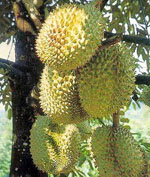
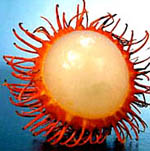
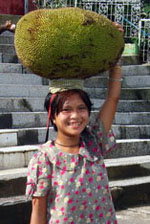
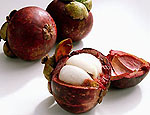
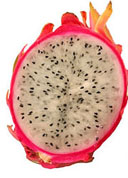
mangosteen is the one of my favorite fruits. but the problem is every time i will grow this fruit tree is always died . may be because of the climate in my farm ? or the soul ?
i need to purchase mangosteen fruit please help,thank you
Mangosteen is known as mannggis in indonesia n is one of my fav fruits. The taste of these fruits is just mouth watering.
I sell mangosteen fruits in my fruit shop
Hi,
Let me introduce myself, I’m Robert SHAU located in Tahiti, French polynesia.
I have seen your tropical fruits such as pitaya, mogosteen, etc and I’m verry interetsed about it.
So, would you please let me know if you can supply some seeds.
Awaiting for your answer.
Thanks and with best regards.
Robert SHAU